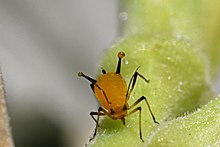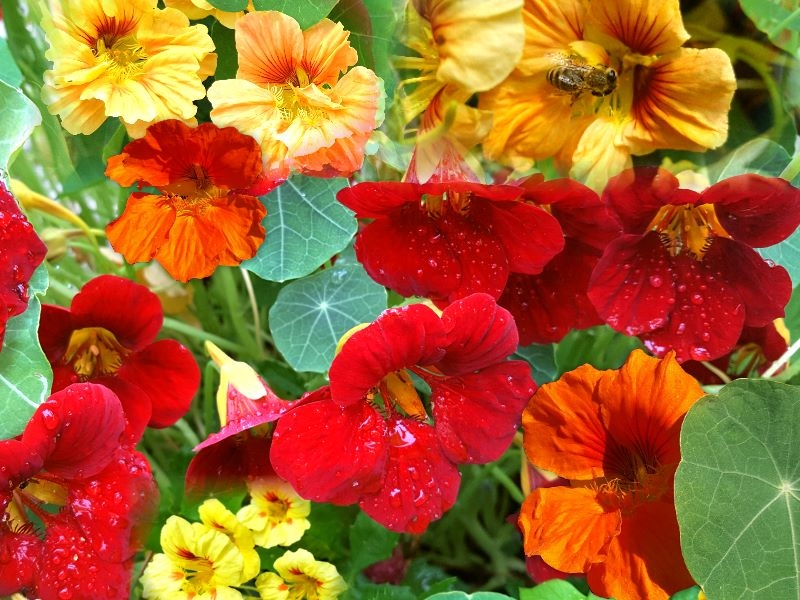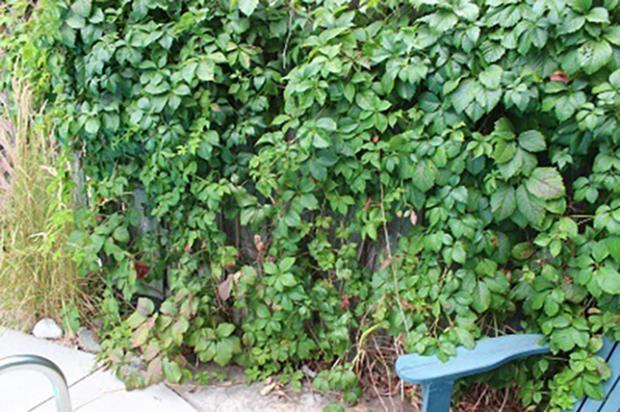Tending Fences
 |
Virginia Creeper (parthenocissus cinquefolia) is, for all intents and purposes, a woody-stalked, fast growing vine native to North America. It thrives in our region. As its name suggests, it can grow untended up to 90 feet in length. It can be cultivated for its screening abilities, blue Summer berries and crimson Fall foliage, but any gardener who understands the impact on future generations of gardeners doesn’t plant it intentionally. Untended it can be destructive; taking root under porches, pulling down fence panels, disintegrating brick mortar, disrupting foundations and dislocating gutters and downspouts. Over time an abundance of it has taken up residence along our fence line with one of our neighbors. Clipping it back regularly, unthreading it from my trumpet vine, weaving it out of my hydrangea, pulling it off of and away from my butterfly bush’s tender new shoots, I breathe quiet curses. Dutifully, diligently I rip and clip it out. Our neighbors get to enjoy its Fall color changes and do the birds a great service in providing them those beautiful berries, as well as a place to nest. I haul wheelbarrow loads of the stuff from that neighborly fence to our yard debris/compost pile. There it dries out, withers, and dies the slow death it deserves. I haven’t uprooted much of it, however. I did spend some time this Spring getting closer to the source of the problem, much to my lower back’s lament. Ferreting out the thickest sections of the vine, I followed it to its roots and found that it is of course woven along, under, through, and beside both sides of the fence, and not just on our neighbor’s side as I had been telling myself. Fences, weeds. It dawned on me that they do sort of stick together if you don’t pay attention to them. Who knew plants could be so clever? So next year the focus will be on digging it up on our side. It is not a problem to our lovely and neighborly neighbors. But it is most definitely our problem so long as it roots here, in our own backyard, where many other beautiful plants are working hard to bloom and deserve the chance to do so. Generally speaking, tackling the root of the problem with weeds means literally digging, unfortunately. It means work! Back-breaking work, frankly. Anyone who isn’t beholden to Monsanto or otherwise trying to sell you a weed killing poison will tell you that digging weeds up, out, and away so that no root is left behind to begin again is The Best Way to get rid of them. It seems much easier to just buy a jug of Round-Up and spray them down. In that case one may as well purchase some shares of Monsanto, too. Instead of digging, you can douse your weeds with vinegar if your back, like mine, often dictates. Boil some water and pour it on them. Hand your 8 year old a magnifying glass and put them to work. Long ago, to add some variety to a truly dull task, I even used a propane torch on my weeds much to the amusement of my neighbors. Regular vinegar from the grocery store works fine; varying the concentration to suit the purpose is what matters. It absolutely fries weeds straight up. Lovely. Just be sure to dilute it ⅓ vinegar ⅔ water if you’re going to be applying it anywhere near plants you do not want to kill. I’ve found that pouring at the source of the weed *after you have pulled out as much as possible* is much more effective than spraying and ensures that you don’t harm nearby wanted foliage. |
 |
That said please, do NOT try to use vinegar to get rid of weeds in your lawn. Grass thatches, which means that it is more often than not a knotted, thick mass of roots below the surface. Vinegar can be disappointing in this situation to say the least, and trying to take weeds out of the lawn by the shovelful is literally a pain. Not going to sugarcoat this: just hire an environmentally friendly landscaper, or a neighbor kid, or offer your own child or grandchild a reward for digging out the problem areas, saturating the soil with water, and filling them with soaking wet, overlapped sections of sod, which can be cut to shape and found at garden centers if you don’t go the landscaper route. Then water the heck out of that area until the sod has taken root. Done. Seriously. Kick back and pour yourself a margarita or tall, cold glass of club soda with lime. Life is too short. Then next year, when the dandelions, clover and crabgrass try to pop up in your grass again, because we know they will, dig them out before they go to seed. Then add those dandelion greens to a salad. Not only have you saved your Round-Up money to invest instead in a green energy mutual fund, you can now also eat your delicious weeds because they are neuro-toxin free. Fire, water, vinegar. Simple, elemental ways to eradicate weeds that Mother Nature understands and can easily, healthfully handle. |
 |
Vinegar kills both weeds and bugs, actually, but the main rule in insect control is being both proactive and observant. More than anything else it’s important to get in the habit of looking closely at your plantings. Many detrimental insects, such as aphids, thrips and whiteflies reproduce and colonize plants very quickly. Just taking some time once a week to look closely at a sampling of buds on your plants and just as importantly, turning their leaves over to inspect the undersides, can help you to identify and stop infestations before they start so your flowers and veggies can bloom beautifully and in abundance. If an aphid infestation has already occurred you can simply spray them off with water. If you’d rather a more permanent solution, you can spray the plant with a mixture of 1 tablespoon liquid dish soap, ⅓ volume vinegar and the remainder with water. Essential oils can add to the –cide aspect but I’ve found even a solution of water with dishsoap, omitting the vinegar, works well. Spray and watch those nasty little vampires base jump with reckless abandon. Fabulous. Greenhouse whiteflies are also easy to identify and wash off. Thrips have built an immunity to many pesticides. Both, like aphids, are no match for ladybugs, lacewing flies. Thrip predators are laser guided to their prey. So go ahead and order some online and release them into your garden. Your plants will thank you. Ants can also be a problem. A happy side effect of spraying a vinegar solution to manage weeds or pest insects is that you also eradicate the ant’s pheromone trails to the juicy aphid honeydew and flower nectar they seek. Also, they despise cinnamon. Who knew? Sprinkle some cinnamon around the perimeter of your roses and ornamental flowers and they will thank you. Once you start looking into natural remedies for weeds and bugs you’ll find these and many other interesting ways that herbs, spices, essential oils and soap can work together to alleviate a number of problems. |
 |
It’s rewarding to help nature help itself. Nasturtium makes an excellent and beautiful weed barrier/border around the vegetable garden and is ridiculously easy to grow from seed. The beauty of nasturtium is multi-dimensional. Not only does it produce a colorful, low-growing border, not only are both its leaves and gorgeous flowers edible (both are very nice in salads or the leaves ground into pesto), and not only does nasturtium act as a natural weed barrier to the garden, and not only is it loaded with Vitamin C, and Not Only Is It Pollinator Friendly – it is a natural repellant to white flies, aphids, cabbage loopers, beetles and squash bugs. All that being said, it’s worth repeating that nasturtium does not repel honeybees! So do yourself, your vegetables and our friendly pollinators a favor. Plant some nasturtium around the border of your vegetable garden and literally everyone wins |

